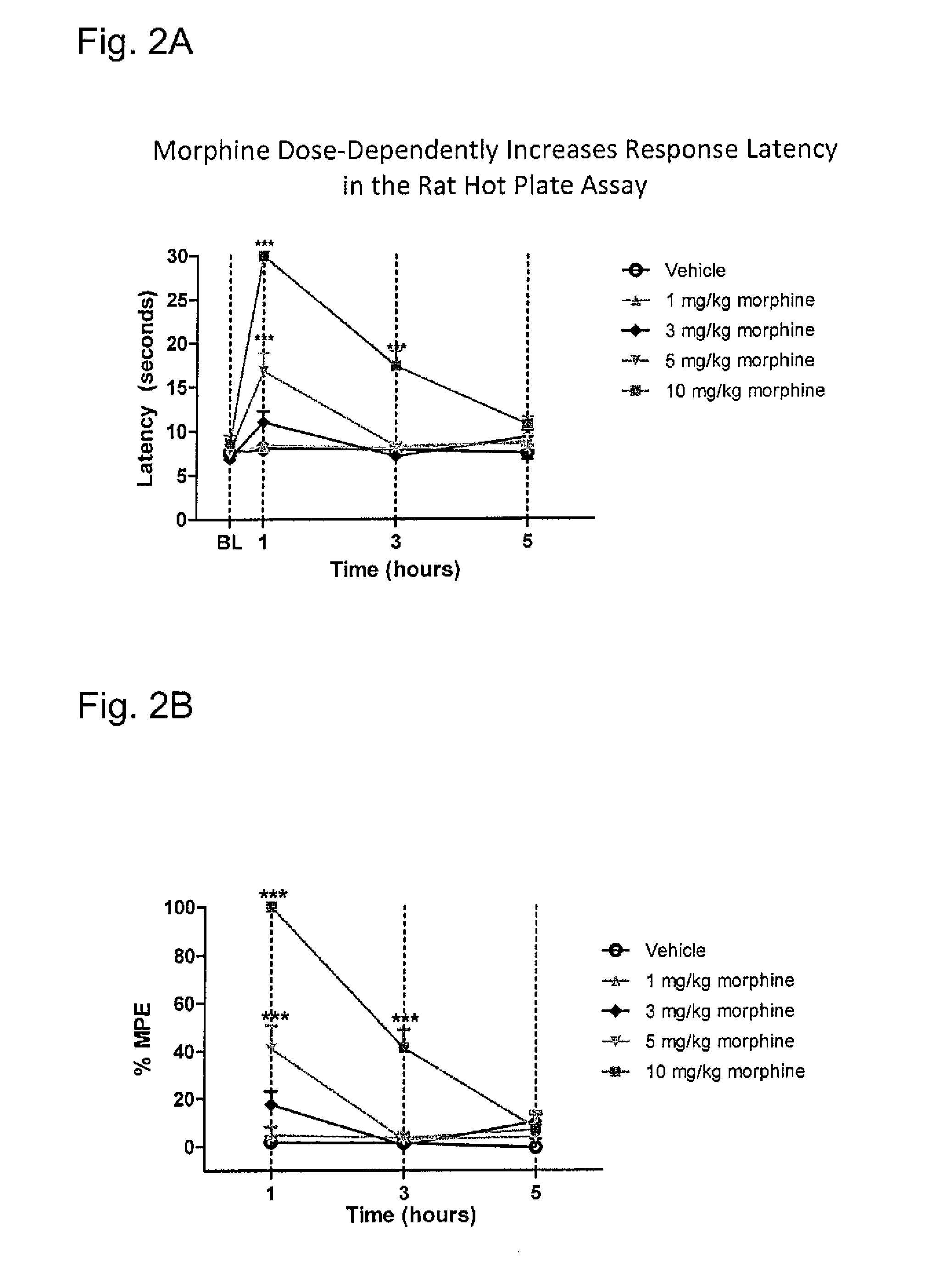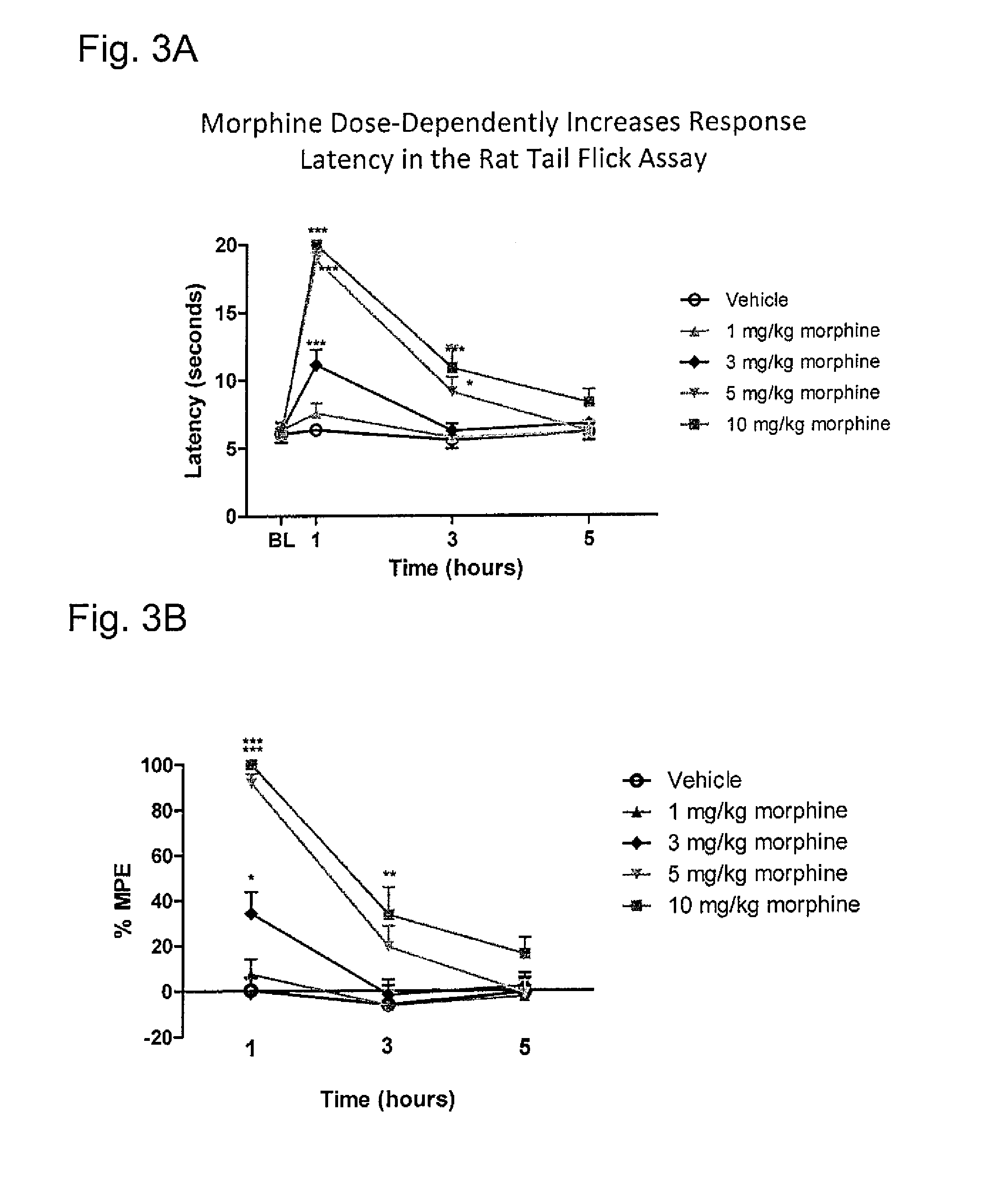Systems and methods for treating an opioid-induced adverse pharmacodynamic response
a pharmacodynamic response and system technology, applied in the direction of antinoxious agents, drug compositions, immunological disorders, etc., can solve the problems of bowel dysfunction, adverse pharmacodynamic response, decreased gastric motility, etc., and achieve the effect of reducing gastrointestinal transit and greater
- Summary
- Abstract
- Description
- Claims
- Application Information
AI Technical Summary
Problems solved by technology
Method used
Image
Examples
example 1
The Effect of Morphine Alone on GI Transit
example 1a
[0200]Test subjects: male Sprague-Dawley rats, 200-230 g; n=10 / group.
[0201]Morphine sulfate (1-10 mg / kg) or 0.9% normal saline (vehicle) was administered subcutaneously (SC) to the test subjects. 0.5 hour later, a charcoal meal (1 ml / 100 grams) was orally administered (PO) to the test subjects.
[0202]One hour after the charcoal meal, the test subjects were euthanized by CO2 and the gastrointestinal tract was removed from the stomach to the cecum. The length of the small intestine and the distance (cm) to the leading edge of the charcoal were recorded. Data were analyzed using a one-way ANOVA followed by the Dunnett's Multiple Comparisons test where *P<0.05, **P<0.01 and ***P<0.001. Data are represented as the means±S.E.M. The results shown in FIG. 1A demonstrate that morphine decreases gastrointestinal transit as evidenced by the decreased % of the small intestine travelled by a charcoal meal following morphine treatment as compared to vehicle treated animals. This effect was dose de...
example 1b
[0203]Test subjects: male Sprague-Dawley rats, 200-230 g; n=10 / group.
[0204]Morphine sulfate (1-10 mg / kg) or 0.9% normal saline (vehicle) was administered SC to the test subjects. 0.5 hour later, a charcoal meal (1 ml / 100 grams) was administered PO to the test subjects. One hour after the charcoal meal, the test subjects were euthanized by CO2 and the stomachs were removed and weighed. Data were analyzed using a one-way ANOVA followed by the Dunnett's Multiple Comparisons test where *P<0.05, **P<0.01 and ***P<0.001. Data are represented as the means±S.E.M. Results are shown in FIG. 1B. The results shown in FIG. 1B demonstrate that morphine decreases gastrointestinal transit as evidenced by increased stomach weight due to delayed gastric emptying. This effect was dose dependent with a greater magnitude of effect observed with increasing dose.
PUM
| Property | Measurement | Unit |
|---|---|---|
| time | aaaaa | aaaaa |
| time | aaaaa | aaaaa |
| thickness | aaaaa | aaaaa |
Abstract
Description
Claims
Application Information
 Login to View More
Login to View More - R&D
- Intellectual Property
- Life Sciences
- Materials
- Tech Scout
- Unparalleled Data Quality
- Higher Quality Content
- 60% Fewer Hallucinations
Browse by: Latest US Patents, China's latest patents, Technical Efficacy Thesaurus, Application Domain, Technology Topic, Popular Technical Reports.
© 2025 PatSnap. All rights reserved.Legal|Privacy policy|Modern Slavery Act Transparency Statement|Sitemap|About US| Contact US: help@patsnap.com



